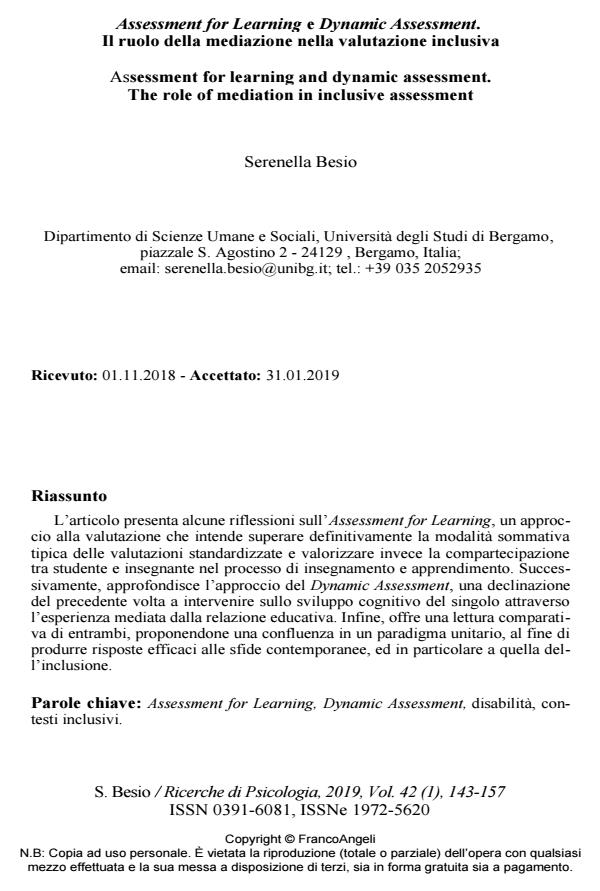Assessment for Learning e Dynamic Assessment. Il ruolo della mediazione nella valutazione inclusiva
Titolo Rivista RICERCHE DI PSICOLOGIA
Autori/Curatori Serenella Besio
Anno di pubblicazione 2019 Fascicolo 2019/1
Lingua Italiano Numero pagine 15 P. 143-157 Dimensione file 201 KB
DOI 10.3280/RIP2019-001009
Il DOI è il codice a barre della proprietà intellettuale: per saperne di più
clicca qui
Qui sotto puoi vedere in anteprima la prima pagina di questo articolo.
Se questo articolo ti interessa, lo puoi acquistare (e scaricare in formato pdf) seguendo le facili indicazioni per acquistare il download credit. Acquista Download Credits per scaricare questo Articolo in formato PDF

FrancoAngeli è membro della Publishers International Linking Association, Inc (PILA)associazione indipendente e non profit per facilitare (attraverso i servizi tecnologici implementati da CrossRef.org) l’accesso degli studiosi ai contenuti digitali nelle pubblicazioni professionali e scientifiche
L’articolo presenta alcune riflessioni sull’Assessment for Learning, un approc-cio alla valutazione che intende superare definitivamente la modalità sommati-va tipica delle valutazioni standardizzate e valorizzare invece la compartecipa-zione tra studente e insegnante nel processo di insegnamento e apprendimento. Successivamente, approfondisce l’approccio del Dynamic Assessment, una decli-nazione del precedente volta a intervenire sullo sviluppo cognitivo del singolo at-traverso l’esperienza mediata dalla relazione educativa. Infine, offre una lettura comparativa di entrambi, proponendone una confluenza in un paradigma unita-rio, al fine di produrre risposte efficaci alle sfide contemporanee, ed in particolare a quella dell’inclusione.
Parole chiave:Assessment for Learning, Dynamic Assessment, disabilità, contesti inclusivi.
Serenella Besio, Assessment for Learning e Dynamic Assessment. Il ruolo della mediazione nella valutazione inclusiva in "RICERCHE DI PSICOLOGIA " 1/2019, pp 143-157, DOI: 10.3280/RIP2019-001009